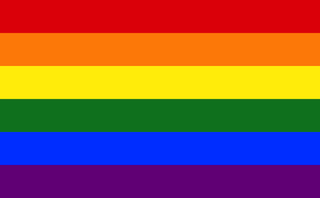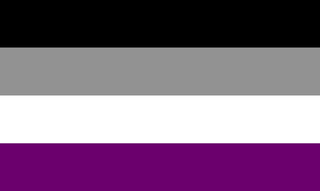
LGBTQ+ Flags and Their Meanings
Posted
This article covers the main LGBTQ+ flags and some lesser known ones too.
Hey there, my fellow LGBTQ+ folks. Today, let's talk about the rich and colorful history of the flags that represent our community. From the classic 6-color Rainbow Pride Flag to the newer and more inclusive designs, each flag has its own unique story to tell.
The Pride Flag

The 6-color Pride Flag featured red for life, orange for healing, yellow for sunlight, green for nature, blue for harmony, and purple for spirit. This flag was created to represent the diversity and beauty of our community.

But as time went on, our community continued to grow and evolve, and we needed new flags to represent all the different facets of our identities. Enter the Philadelphia Pride Flag, which added black and brown stripes to represent people of color in our community. This design was created in 2017 to address the ongoing issue of racism within the LGBTQ+ community.

The Progress Pride Flag, designed in 2018 by Daniel Quasar, takes inclusivity to the next level. It includes the classic rainbow colors, as well as black and brown stripes for people of color, and pink, blue, and white stripes for transgender individuals. This flag reminds us that our community is diverse and intersectional, and we must uplift and support all members.
Specific LGBTQ+ Flags
Now let's dive into some of the flags that represent specific identities within our community.

The Lesbian Flag: Designed by Emily Gwen in 2018, this flag features seven horizontal stripes of various shades of pink, orange, and brown, as well as a white stripe to represent gender nonconformity. It has become a widely recognized symbol of the lesbian community. ( see the history of the Lesbian Flag)

The Bisexual Flag: The bisexual flag was created in 1998 by Michael Page to represent the bisexual community. The flag features three stripes: pink, purple, and blue. The pink stripe represents same-sex attraction, the blue stripe represents opposite-sex attraction, and the purple stripe represents a mix of both.

The Pansexual Flag: The pansexual flag was created in 2010 by activist Jasper Rine. The flag features three stripes: pink, yellow, and blue. The pink stripe represents attraction to females, the blue stripe represents attraction to males, and the yellow stripe represents attraction to all genders.

The Transgender Flag: The transgender flag was designed by transgender woman Monica Helms in 1999. The flag features stripes of light blue, pink, and white, with the blue stripe representing male identity, the pink stripe representing female identity, and the white stripe representing non-binary individuals.

The Nonbinary Flag: The nonbinary flag was created in 2014 by activist Kye Rowan. The flag features four stripes: yellow, white, purple, and black. The yellow stripe represents gender outside of the binary, the white stripe represents all genders, the purple stripe represents a mix of male and female, and the black stripe represents a lack of gender

The Intersex Flag: Designed by Morgan Carpenter in 2013, this flag features a purple circle on a yellow background to represent the intersex community. It has become a widely recognized symbol of intersex rights and visibility.

Asexual Flag: Designed by AVEN user standup in 2010, this flag features four horizontal stripes of black, gray, white, and purple. The black stripe represents asexuality, the gray stripe represents gray-asexuality and demisexuality, the white stripe represents sexuality, and the purple stripe represents community.

The Agender Flag: Designed by Salem X in 2014, this flag features four horizontal stripes of black, gray, white, and green. The black and white stripes represent the absence of gender, the gray stripe represents the space between male and female genders, and the green stripe represents non-binary identities.

The Genderfluid Flag: Designed by JJ Poole in 2012, this flag features five horizontal stripes of pink, white, purple, black, and blue. The pink stripe represents femininity, the white stripe represents neutrality, the purple stripe represents both femininity and masculinity, the black stripe represents all genders, and the blue stripe represents masculinity.

The Bigender Flag: The Bigender Pride Flag was designed by user "Samlin" on Tumblr in 2011. The flag features three horizontal stripes: pink for femininity, blue for masculinity, and purple for the combination of both. The flag is meant to represent those who identify as having two genders.
So there you have it, folks! The colorful history of our flags and what they represent. No matter which flag you identify with, we are all united in our right for equality, acceptance, and love.